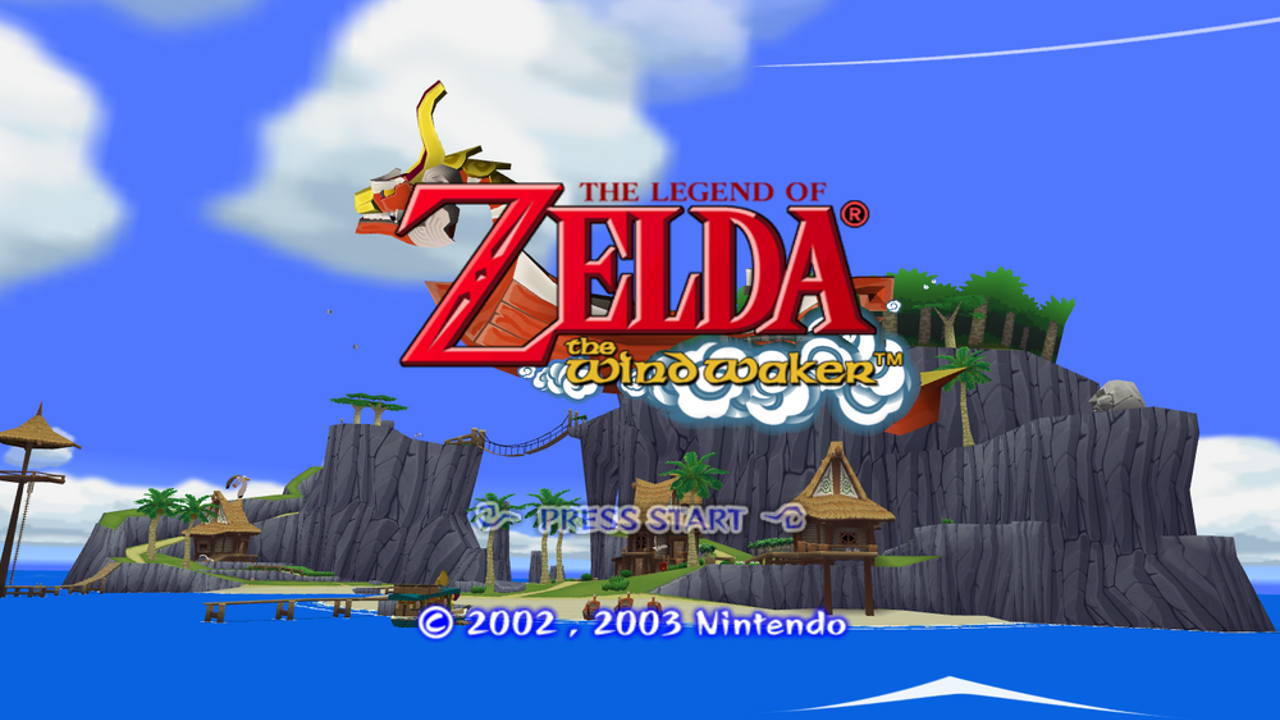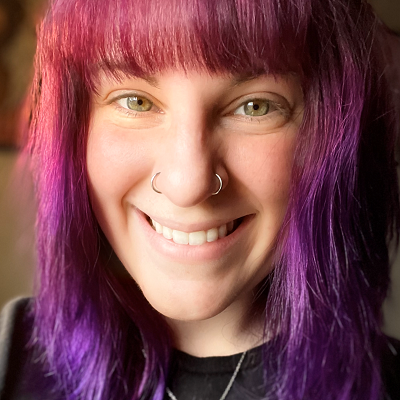Fresh Takes: Getting 100% in The Wind Waker 18 Years After My Initial Playthrough
Posted on February 28 2025 by Nicole Scott

Some may be able to relate to me with this intensely specific experience: your sibling is your best friend and a fellow gamer; and when you decide to move away from home, the childhood consoles get split between the two of you. This exact scenario was when I lost the ability to play The Legend of Zelda: The Wind Waker for many years, because my sister took the GameCube. Though I had the Wii, no GameCube games traveled with me, leaving those tiny discs in my sister’s very caring hands. I could’ve repurchased it, but it suddenly became expensive and hard to justify.
This entry of Fresh Takes was an excellent excuse to borrow a copy and go back to the Great Sea. Revisiting this game after nearly two decades has given me a revelation — the part I now like most about this game was an experience I never had in my first playthrough.
The 100% Evolution

I played The Wind Waker for the first time in 2007, immediately after my first ever Zelda playthrough — Twilight Princess on the Wii. At the start of the spring months, I would wake up early to traverse the Great Sea before my sister woke up. Eventually, she would re-commandeer the GameCube to entertain me with Animal Crossing, Luigi’s Mansion, or Baten Kaitos: Eternal Wings and the Lost Ocean. It made my playthrough hasty, and coming off the heels of my first-ever Zelda experience, I didn’t know yet what I loved most about the franchise.
Now, I know. When I played these two games, I was naïve on what “completion” meant in the scope of the Zelda series, much less what it took to 100% Wind Waker. Long summer days playing the original Spyro the Dragon trilogy with my sister made me love being a completionist and adore collect-a-thons. Thankfully, Zelda is full of them, and I had no idea how much there was to gather in The Wind Waker.
In 2025, I set out to right my personal wrongs. I was going to nab every item and, yes, every figurine for the Nintendo Gallery. Unfortunately, I lacked the ability to use the Tingle Tuner, so it’s not a perfect run. But, I still feel retribution for my past self. For reference, I used this list to keep track of my progress!
I made myself a cheat sheet of the missable photos so I couldn’t lock myself out of completion. I even typed in bold letters at the top “USE SAVE STATES,” because I didn’t want to be disappointed photographing a boss I’ll never see again, only for Carlov to be unable to identify it.
It took a long time, but I’ve officially 100% The Wind Waker. What was that experience like?
The Slow Start

I’m pretty sure I first played this game on a CRTV. What I didn’t consider was how blurry this game would look on my 55-inch widescreen. It made the experience relatively uncomfortable to start with until my eyes adapted. However, the colors were still vibrant and joyous, even though this wasn’t the HD version.
I also realized how much of my experience was affected by nostalgia. We all know Zelda games have notoriously long opening sequences. This time, I felt like I was stuck in one for hours. I didn’t dislike the opening portion of this game, but I was questioning how easily impressed and uncritical I was back in 2007.
Though I had a taste of what good dungeon designs were like from Twilight Princess, I barely had an idea what spectacular layouts and puzzles were throughout the series. Now, having played almost every mainline game, I can say with certainty I didn’t love the first three-dungeon run as much as my younger self.
In fact, for my gaming preferences and from my Zelda experience, I determined The Wind Waker’s dungeons are some of the weakest points in the game. My favorites were the Wind and Earth Temples, and Tower of the Gods had potential to be great but slightly missed the mark. I knew I would need to do a bulk of the story before getting to do the majority of side quests with exploration uninhibited, so the inconsistent dungeons disrupted the pacing for me.
Simultaneously, I realized my intention going into this game was 100%, which affected my patience progressing through temples. I am not a stealth fan, so Forsaken Fortress was never going to be my ideal dungeon template, and I wouldn’t consider Dragon Roost Cavern and Forbidden Woods highlights. I also will never understand Nintendo’s obsession with boss rushes or enemy gauntlets, so the Savage Labyrinth also feels uninspired. (While Zelda is guilty of this, the series gets some grace from me compared to the Kirby franchise, in this regard.) I found myself slogging through the beginning of this game, begging for when I could set sail on the open sea in peace.
This was a shocking thing for me to admit, but I still love this game despite it all. It made me consider how the completionist mindset could alter the enjoyment of the journey to the triumphant destination, even though I’m objectively spending longer on the journey itself.
The Quest Becomes Epic

Those moments at sea are what rekindled my love for this title. While some consider it boring, I found it calming, and the 100% grind quickly became my preferred way to experience this game.
Since I wasn’t beelining from one place to the next, I paid a lot more attention to the soundtrack. I know this is a beloved soundtrack in the franchise, but I was surprised by how many of the songs I had forgotten. The themes for Windfall Island and Dragon Roost often overshadow everything, in addition to the Great Sea’s song (rightfully so). However, there are many unsettling, atmospheric tracks that stuck with me. The “Wind Temple,” “Forbidden Woods,” “Illusionary Room,” and “To Hyrule” were standouts. There was a sinister undertone I definitely blocked out of my memory, since I’m more inclined to remember feeling like an epic pirate with a colorful backdrop.
I have 100%’d many Zelda games at this point, semi-regrettably including The Minish Cap and Tears of the Kingdom. This experience gave me a new perspective on what it feels like to dive deep into the mundanity of this series, especially after living in the Era of the Wild for so long. While tedium is definitely a drawback for many Zelda quests, the Great Sea was the perfect place for me to focus on small, single tasks and escape the hyper-stimulating realms of many modern games. There was a lot to do, but it wasn’t too much.
When I was a kid, I also recall attempting to avoid combat at sea as much as possible. I didn’t love manipulating the Cannon, but I enjoyed it a lot more this time around since I felt more connected to my boat this playthrough. The King of Red Lions and I spent more quality time together, as cheesy as it sounds, since he wasn’t only a vehicle for getting from one plot point to the next. I even found fighting every Big Octo to be particularly epic.
The part that required the most patience by far was collecting figurines for the Nintendo Gallery. I played the original Wind Waker, so I didn’t have the privilege of 12 snapshots in the Deluxe Picto Box — I was stuck at three, going back and forth to the Forest Haven like it was my full-time job. Also, I remember Orca demanding me to be level-headed as an early teenager. I don’t even think I ever made it to 500 hits. However, 18 years later, carpal tunnel made his combat challenge notably aggravating.
The Fresh Take
I don’t think I could’ve confidently stated where The Wind Waker fell in my rankings before this definitive playthrough. I knew it was in the upper half, but anything more specific than that was hard to define. I know why now, because my opinions of many of my other top Zelda games were deeply affected by the 100% goal. It goes to show how memory plays with you after so many years, but I think I love The Wind Waker all the same. It just hits different now.
I feel not only tied more to the world and its characters, but to my sister and friends who go on these journeys with me, wanting to be a completionist as much as I do. While this franchise is typically a solo experience, I realized I somehow redesigned it into something more collaborative for myself. We get to be excited about overcoming a hard challenge or checking off another task. I’ve had these celebratory moments with many of the later games, but the isolation of my first Wind Waker playthrough didn’t have this spark.
The playthrough reminded me that a game’s legacy and merit go beyond its base story, even if that’s where most people start and end. It also highlighted how pivotal it is to live in the world outside of the main quest in the Zelda series. The completionist mindset gave me a gaming experience with greater texture and immersion, seeing every nook and cranny where Nintendo poured its heart and effort. To me, this game is carried by its quests, NPCs, and exploration, which can’t be absorbed in their entirety without one wanting to see and do everything. While the dungeons are memorable in ways, they will not be the reason I return to this game in the future. No matter what, this feels like the experience I should’ve had my first go around, knowing what I know now about what I love about the Zelda franchise.
It may not be everyone’s cup of tea to repeatedly submit photos for tiny figures, but I just love existing in these worlds. The Wind Waker’s universe is so humorous and whimsical that even the most tedious activity felt like a privilege to be there. It allowed me to get lost for awhile during the dark winter months, and I was very grateful. It’s a feeling I haven’t had in a long time when diving so many hours into a video game.
Have you ever gone back to 100% a Zelda title like this? Did it change your perspective about the game or your relationship with the completionist mindset? Let us know your thoughts in the comments below!

Nicole Scott is writer for Zelda Dungeon from suburban Appalachia. She loves drinking espresso, seeing live music, building LEGO sets, being a completionist, and snuggling her two probably-alien cats, Tizo and Alarielle.




